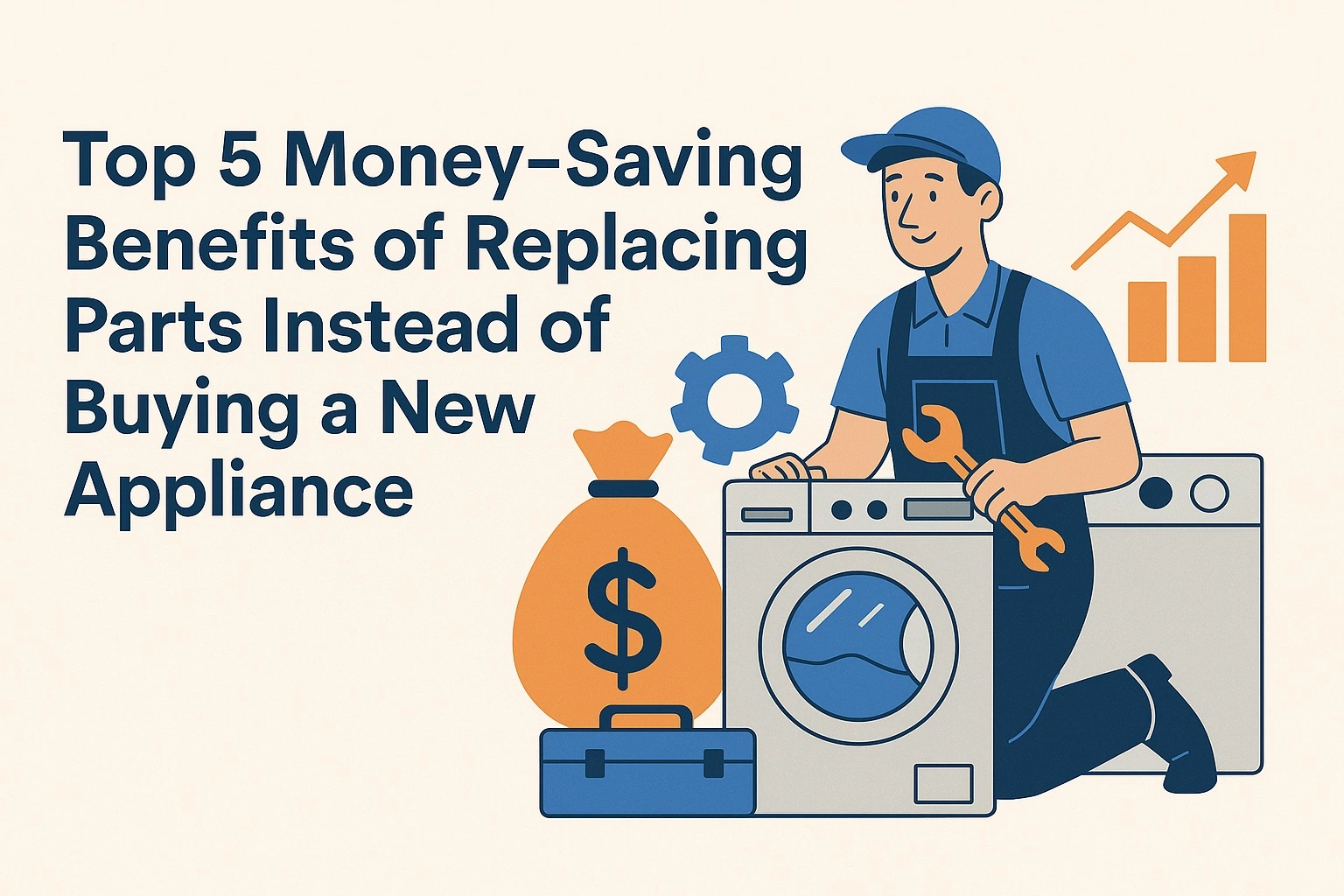Top 5 Money-Saving Benefits of Replacing Parts Instead of Buying a New Appliance
When an appliance breaks down, many homeowners immediately worry about the cost of replacing it entirely. But the truth is, most issues can be resolved by simply replacing a part—at a fraction of the cost of buying a new appliance.
Before you rush to order a new refrigerator, washer, or oven, consider the benefits of repairing your current appliance with high-quality replacement parts. Here are the top 5 ways replacing parts instead of buying new can save you money (and headaches).

1. Save Hundreds—or Even Thousands—Compared to Buying New
The most obvious advantage of replacing a part is the cost savings. New appliances can range anywhere from $500 for a basic model to $3,000 or more for a high-end unit. In contrast, many common replacement parts, like a washer pump, dryer belt, or refrigerator water valve, cost less than $100.
For example, a new control board for your oven might cost $150–$200. Buying a new oven? Easily $1,000 or more. That’s a huge difference for the same end result: an appliance that works like new.
2. Extend the Life of Your Current Appliance
Most appliances are designed to last at least 10–15 years, but individual parts often wear out sooner. Rather than discarding the entire unit, replacing worn components can easily add years of reliable use.
Think of your appliance like a car—you don’t replace the whole vehicle when the tires wear out. You swap the tires and keep driving. The same logic applies to appliances: replace the failing component, and you could get many more years out of your investment.
3. Avoid Hidden Costs of Buying a New Appliance
The sticker price of a new appliance is just the beginning. Most buyers forget to account for:
- Delivery Fees: Many retailers charge $100 or more for delivery.
- Installation Costs: Especially for dishwashers, gas ranges, and built-in refrigerators.
- Disposal Fees: Hauling away your old appliance can add $50–$150 to the bill.
- Additional Accessories: New water lines, vents, or cords are sometimes required.
4. Reduce Waste and Support a More Sustainable Lifestyle
Every year, millions of appliances are discarded—many of which could have been repaired with a single part. Replacing parts instead of tossing an appliance keeps bulky items out of landfills and reduces the demand for new manufacturing, which consumes resources and energy.
In fact, according to the EPA, extending the life of appliances is one of the most impactful ways to reduce household waste. Repairing is not only better for your wallet, but also for the planet.
5. Keep the Features and Fit You Already Love
Finding a new appliance that fits perfectly in your kitchen or laundry space, matches your décor, and includes the features you like isn’t always easy. If you replace your current appliance, you may have to compromise on style, dimensions, or functions you’ve grown accustomed to.
By repairing your existing unit, you can continue enjoying the features and design you already love—without the hassle of shopping, measuring, and adjusting to something new.
Bonus Benefit: Faster and Easier Than Replacing the Whole Appliance
Ordering a replacement part and making the repair often takes less time than buying and installing a new appliance. Many repairs can be completed the same day the part arrives, meaning less downtime in your household routine.
When Replacement Makes Sense
While replacing parts is usually the smarter financial choice, there are times when buying new may be necessary. If your appliance is more than 15 years old, has multiple issues, or repairs exceed half the cost of a new unit, a replacement might be the better investment.
That said, for most modern appliances under 10–12 years old, part replacement is the most cost-effective solution.

